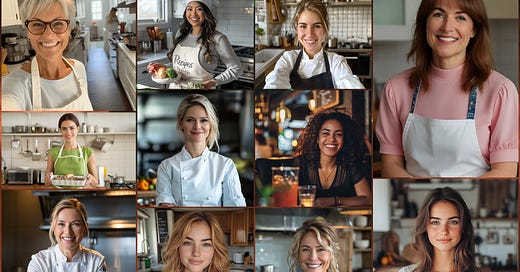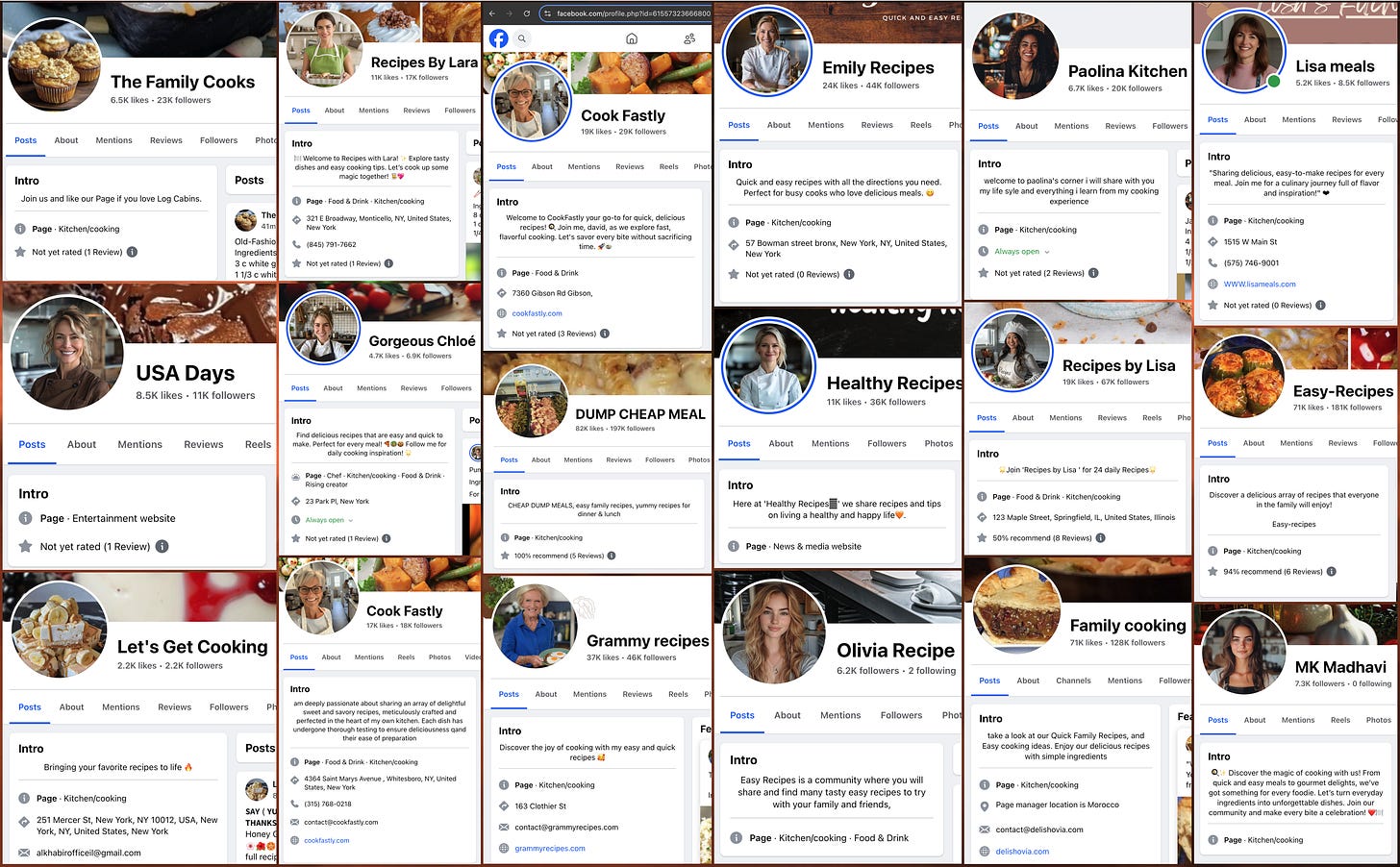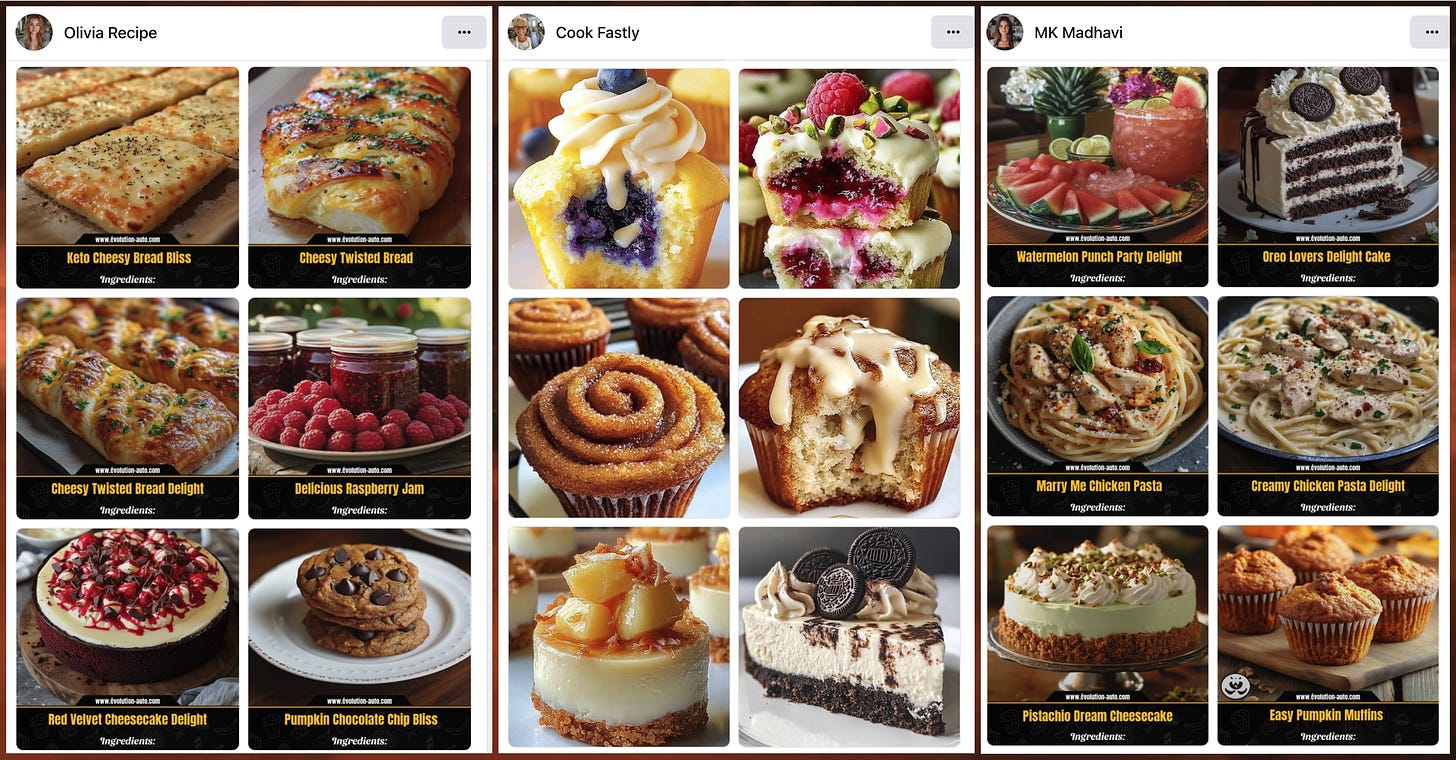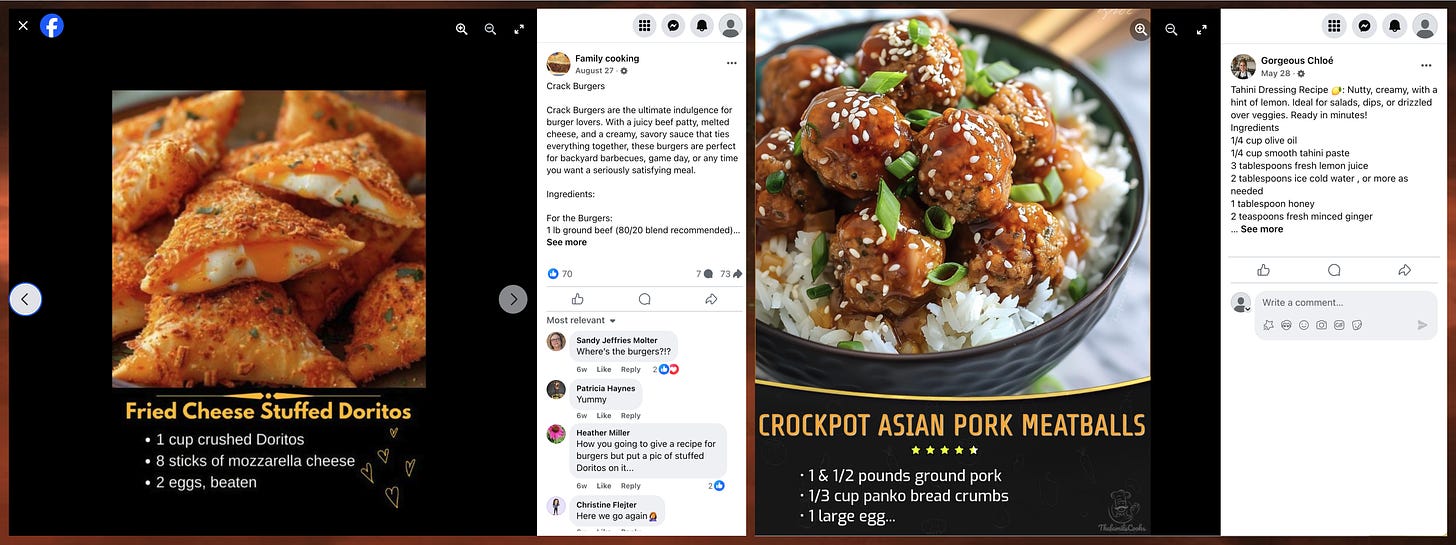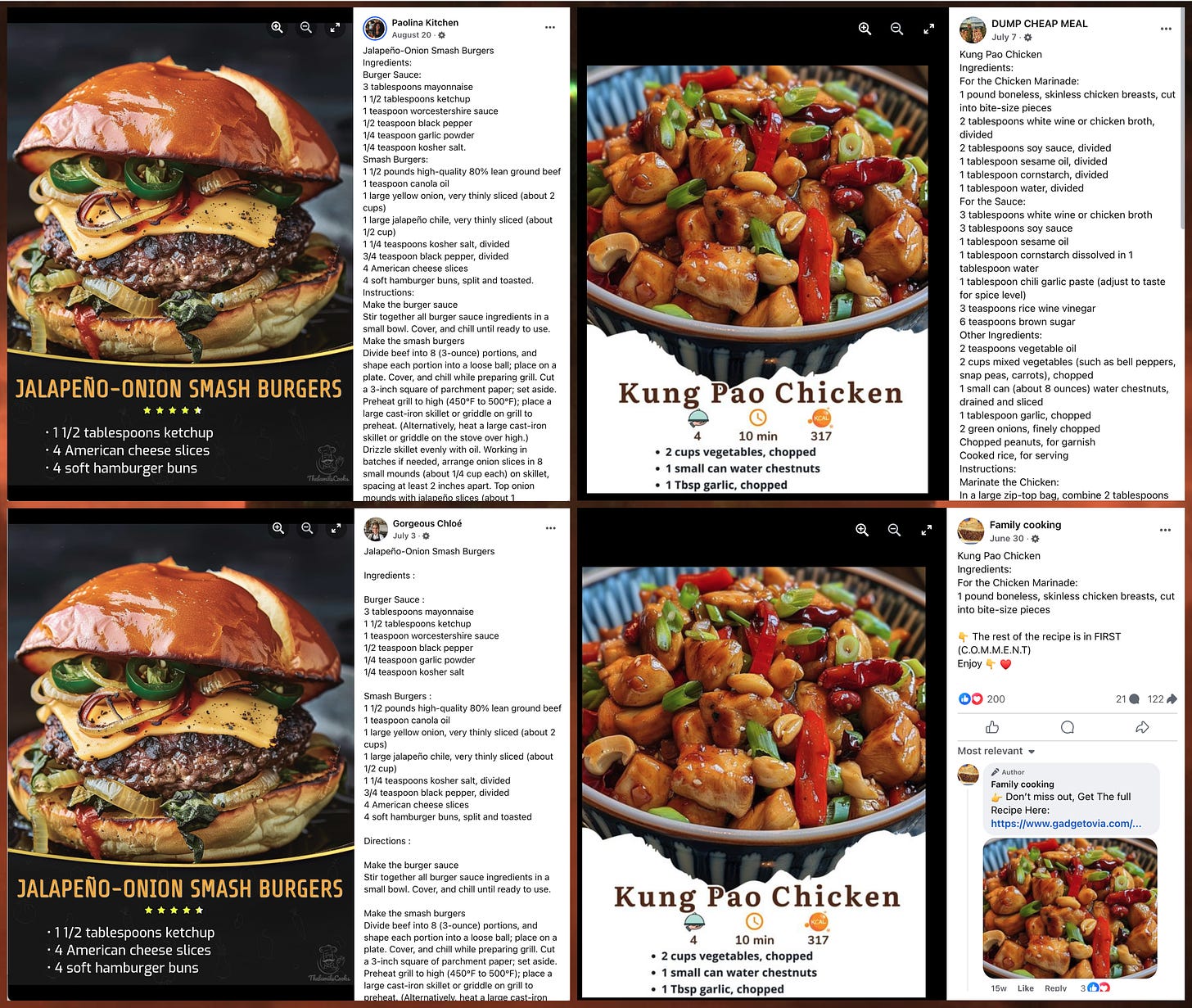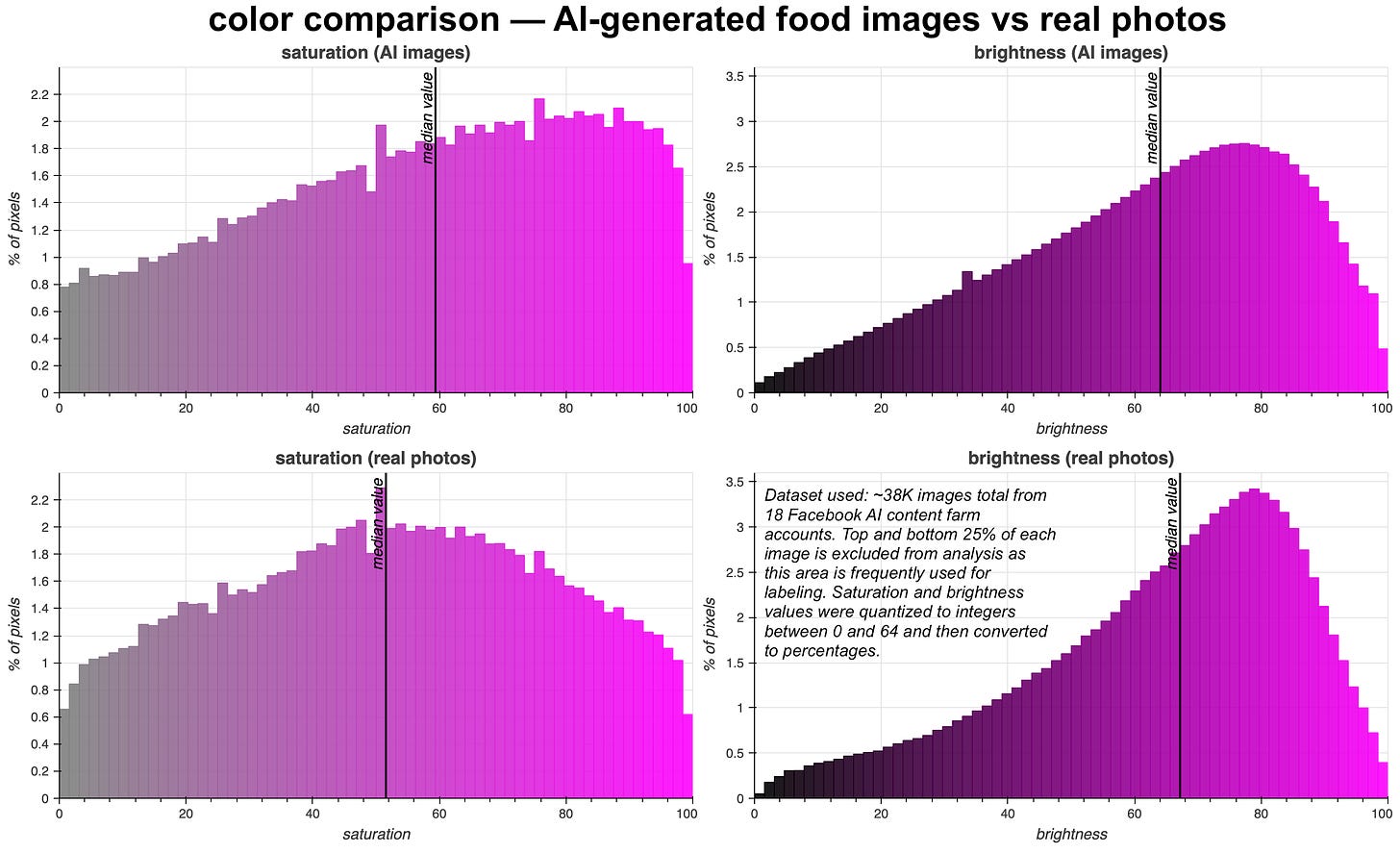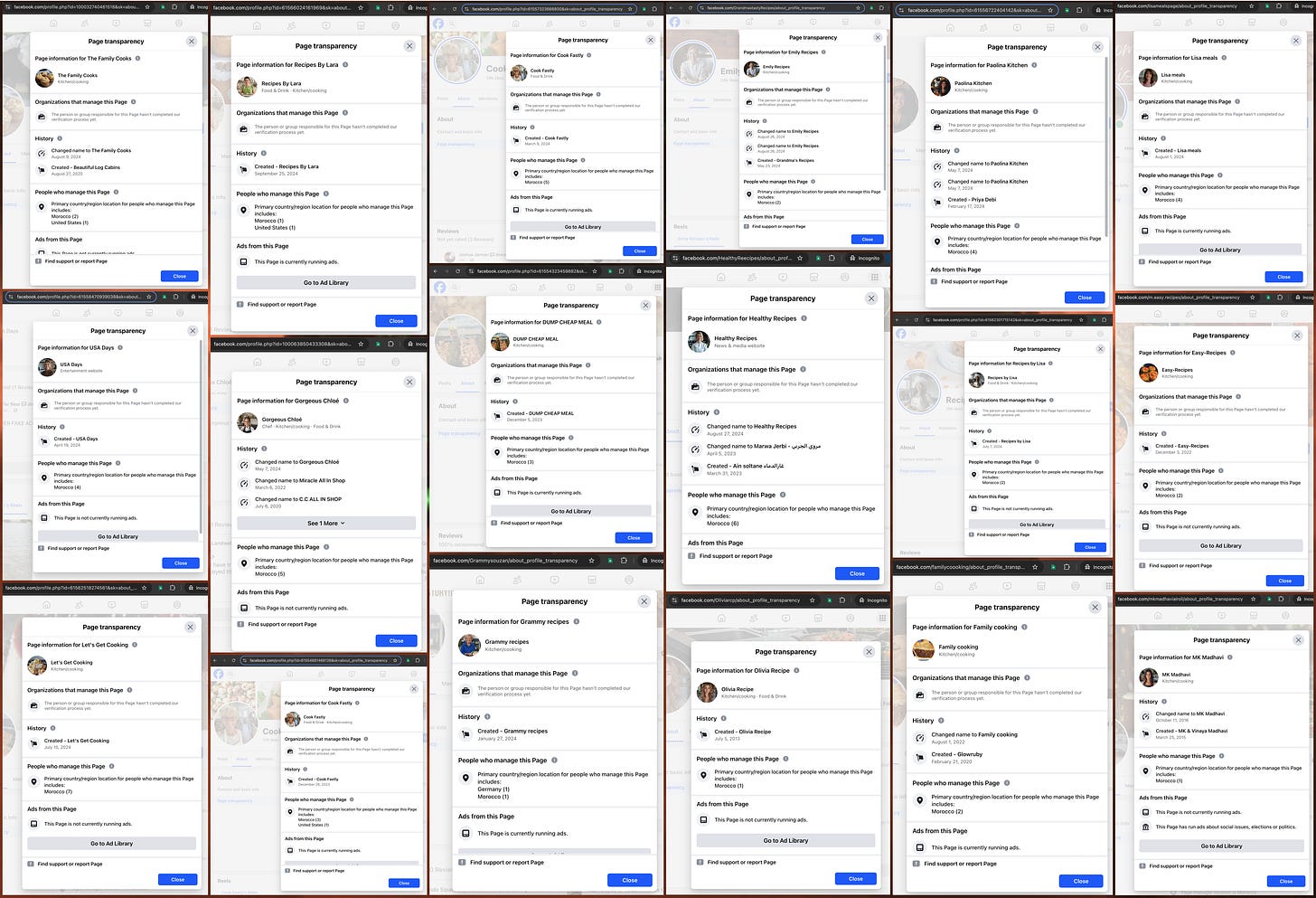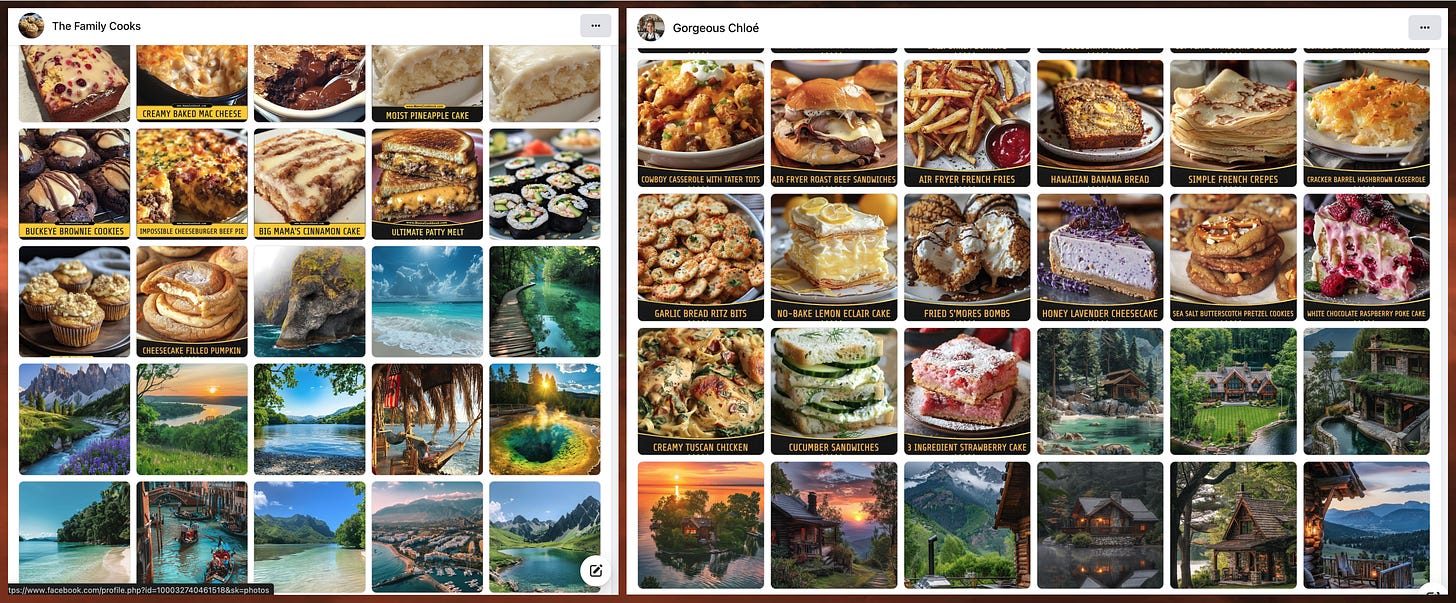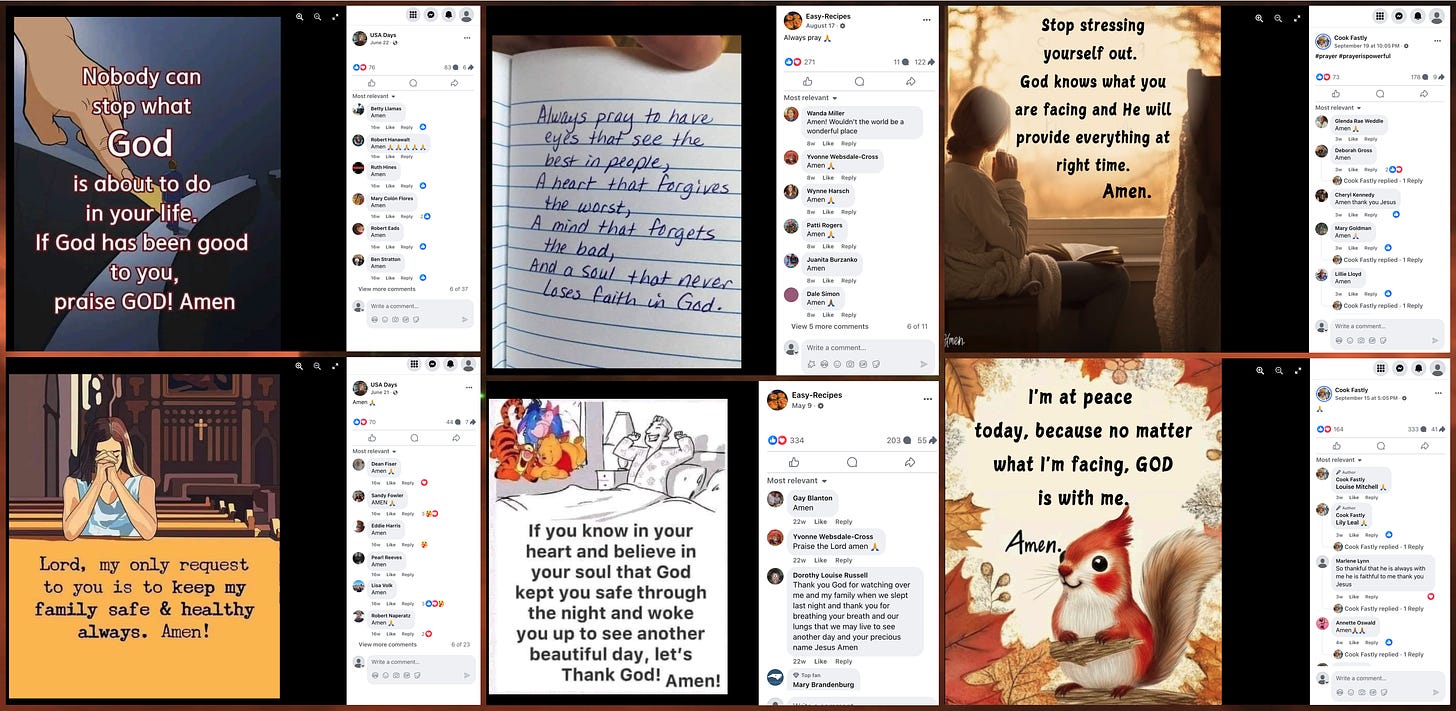These chefs do not exist
The next big thing in Facebook generative AI spam: endless images of nonexistent food items, with a side of thoughts and prayers
Content farms that post seemingly endless streams of AI-generated images of everything from nonexistent barndominiums to bizarre flag-laden trucks have become increasingly common on Facebook over the last year or two. In recent months, AI cooking pages featuring thousands of synthetic images of food have been growing in popularity. Most of these pages use AI-generated images of chefs as avatars, complete with anomalies such as a secondary chef sprouting out of a counter (among other things). In this article, we’ll examine a group of 18 Facebook “cooking” pages that continually spam the platform with similar (and sometimes identical) AI-generated images of cuisine, and appear to be operated from Morocco.
The 18 Facebook pages in question were found simply by scrolling through the feed of posts served to the same test account used in a previous experiment. Doing so for roughly an hour resulted in Facebook repeatedly recommending posts containing AI-generated images of food from 20 different pages. Two of these pages appeared to be false positives after reviewing their overall content, and are hence excluded from this analysis, leaving 18. Twelve of these pages use AI-generated images of chefs as avatars, including two pages named “Cook Fastly” that use the same image. One, “Grammy recipes”, uses a photo of a chef stolen from the BBC, and the remaining five have food items as avatars. Many of these pages claim to be US-based on their profiles, but as we’ll see a bit later on, there’s reason for doubt.
Between them, these 18 Facebook pages have posted over 36,000 AI-generated images of meals, desserts, drinks, and other food items between May 15th and October 15th, 2024, with output accelerating in September and October. Some of the older pages have also posted real photos of food here and there, mostly but not exclusively in May 2024 or earlier. Although many of these images look convincing at first glance, they do contain indicators of their artificial origin. Objects such as jars that should be identical instead vary slightly in size and shape throughout a given image, garnishes and toppings sometimes hover slightly, and textual aspects such as the “Oreo” logo are distorted or outright nonsensical.
Most of the images are accompanied by recipes of unclear origin, some of which may be AI-generated. Although many of these recipes look plausible, they should nonetheless be approached with caution, as generative AI systems have been known to produce lethal culinary advice here and there. In a possible sign that the posting is automated, some of the images are paired with the wrong recipe, such as a platter of “fried cheese stuffed Doritos” accompanied by a recipe for “crack burgers”, and a bowl of “crockpot Asian pork meatballs” accompanied by a recipe for tahini dressing.
Despite the fact that text-to-image models can generate a nearly endless number of unique images, many of these artificially generated food images have been posted repeatedly. Some of the images have been posted by more than one of the AI “chefs”, indicating that the pages may be operated by the same person or entity. The duplicate images are generally accompanied by identical or reworded versions of the same recipe.
As mentioned earlier, some of these pages previously posted real photographs of food. A comparison of the colors between the real photos (1,330 images) and the AI-generated food images (36,329 images) reveals that the AI-generated images are significantly more saturated and a bit darker than their authentic counterparts. Median saturation for the AI-generated images was 59%, as opposed to 51% for the real photos; median brightness values were 64% and 67%, respectively. (The top and bottom 25% of each image was excluded from the color analysis, as many of the images have text labels in one or the other of these locations.)
As mentioned earlier, several of the accounts in the network have US locations on their profiles. Facebook’s Page Transparency feature reveals that this is almost certainly false, however, as the “People who manage this page” section indicates that all 18 pages have administrators in Morocco. Combined with the extremely similar (and sometimes identical) content, and the use of similar avatars, this strongly suggests that these 18 pages are all part of the same operation.
Five of the eighteen AI chef pages have been renamed at least once, with their makeovers accompanied by shifts in content. In two cases, the accounts simply pivoted from one form of AI image spam to another: both "The Family Cooks" (previously named "Beautiful Log Cabins") and "Gorgeous Chloé" (formerly known as "Miracle All in Shop") posted AI-generated images of log cabins, lakes, and other outdoor scenes prior to being renamed and reborn as nonexistent chefs.
Although these pages almost exclusively post AI-generated images of various foodstuffs, several of them intermittently throw prayers and other religious content into the mix. The religious posts generally draw multiple positive replies from the pages’ fans, but do not garner the massive engagement that some of the AI food images have (presumably due to the latter being algorithmically recommended by Facebook more frequently than the former). As with the food images, the religious posts are sometimes repeated.

